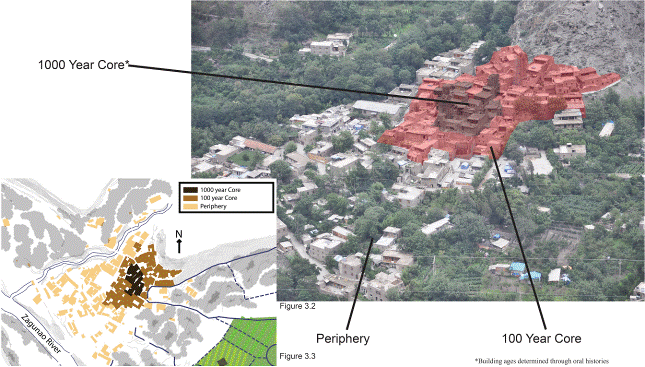 UW TAOPING DESIGN STUDIO
UW TAOPING DESIGN STUDIO |
|
|
The reconstruction of the old village can include buildings that vary in the degree to which they literally recreate structures as they existed prior to the earthquake, without compromising either the loss of valuable historic information or the ability of residents to re-inhabit their old homes. To illustrate this, studio members Garrett Klifman and Nathan Tseng analyzed the spatial distribution of buildings of different ages and levels of earthquake damage to discover where reconstruction design guidelines should require more literally historic restoration, and where the guidelines can be more flexible without sacrificing historical and contextual compatibility (Figure 22). “Compatibility” was defined as adhering to certain rules of building height and mass, fenestration, lot and footprint shape and size, etc. |
|
| Previous Next | |
